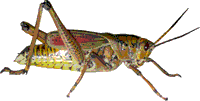Entomology Collections, General

Entomology Papers from Other Sources
Document Type
Article
Date of this Version
1988
Abstract
The biology of the nomadine bee, Epeolus compactus Cresson, is described based on composite notes taken from field, laboratory, and greenhouse studies of the host bee, Colletes kincaidii Cockerell. Details of Epeolus egg deposition are described and compared with other known noma dine bees. We document the release of a glandular secretion during egg deposition by E. compactus which dissolves the polyester host cell lining on contact. Late embryogenesis and hatching of Epeolus are described and adaptive features are discussed. The cleptoparasitic habits of the first instar are outlined, and anatomical differences expressed by various ins tars are compared. Methods used by Epeolus in parasitizing host nests excavated by the nesting Colletes female, or in host nests constructed in existing burrows, are reported. Possible reasons why rates of parasitism differ between kinds of nest architectures constructed by the host bee are discussed in some detail. Potentially useful biosystematic characters of immature stages of Epeolus are compared with those of other known nomadine bees.


Comments
Published in Ann. Entomol. Soc. Am. 81(4): 626-636 (1988).